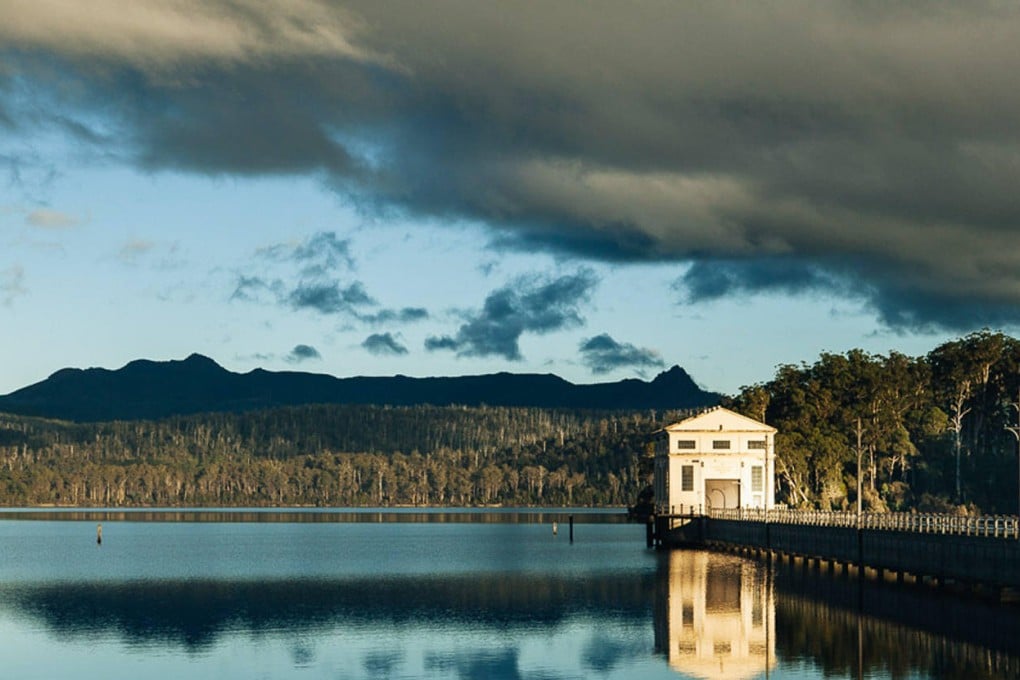Tasmanian wilderness hideaway Pumphouse Point a former hydro station
Leisa Tyler

A number of scattered Hydro-Electric Commission buildings by and on Lake St Clair - a 200-metre-deep glacial lake in the Central Highlands region of Tasmania, Australia - that have recently been converted into a hotel. Built between 1934 and 1940, the two brick and stucco buildings that make up the guest quarters, known as the Shorehouse and Pumphouse - the latter standing over water, at the end of a long walkway known as the flume (above) - were designed to pump water from the lake to the Derwent River, and thus generate electricity. The project never came to fruition and, with Lake St Clair having become part of the 1.5 million-hectare Tasmanian Wilderness World Heritage Area in 1982, the buildings were decommissioned in 1995.

It is; the developer deliberately left the facade as it was - complete with flaking paint and rusting iron - to contrast with the vastly altered interiors. With floor-to-ceiling windows throughout, the two hotel wings are now "Scandinavia meets ski lodge", with a charcoal and beige palette, clean wooden edges and the odd exposed water pipe and old-fashioned tap. There are 18 guest rooms altogether - the best ones being in the Pumphouse, with their stunning views of the lake - and a public space in each wing with a cast-iron fire, a stack of board games and a well-stocked honour bar.
"Relaxed" and "snug" are better words. It is comfortable, with everything you need, but with limited airs and graces. The transparent glass door that (ineffectively) separates the toilet and shower from the bed in the Pumphouse signature rooms may well be a design fault.

No; there is a communal, share plate, three-course dinner each night, with roasted local beef or lamb and vegetables, for A$50 (HK$310) a head, and self-service breakfasts of toast and muesli. If communal dining isn't your thing, each room has a mini kitchen stocked with Tasmanian delicacies such as smoked quail, Westhaven goat's cheese, wood-roasted salmon and King Island blue cheese, plus a small cellar of wines (above). Hampers are available for an indulgent picnic in the great outdoors - just don't forget the insect repellent; Lake St Clair's mosquitoes are known for their ferociousness.